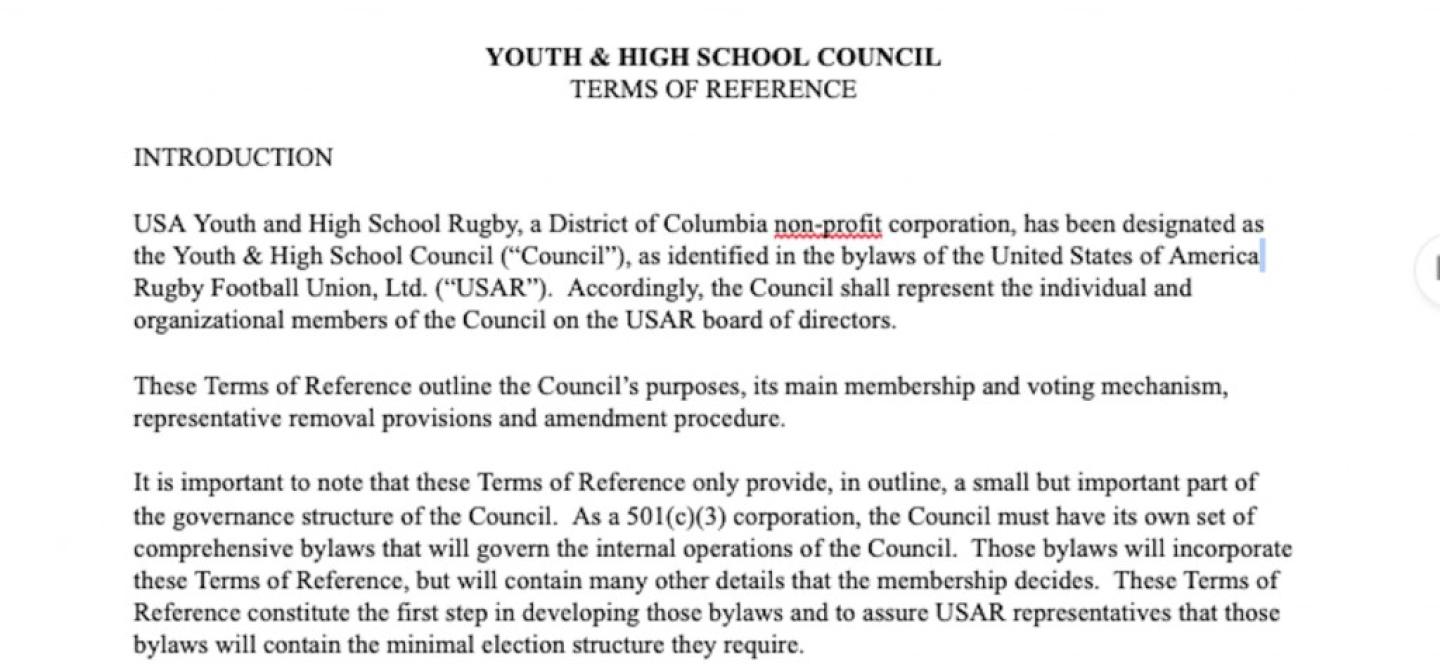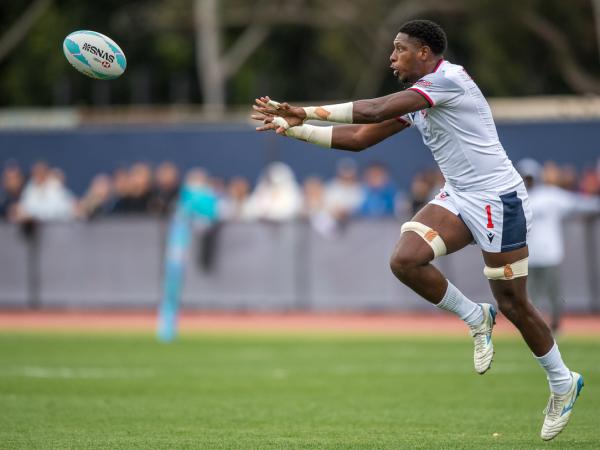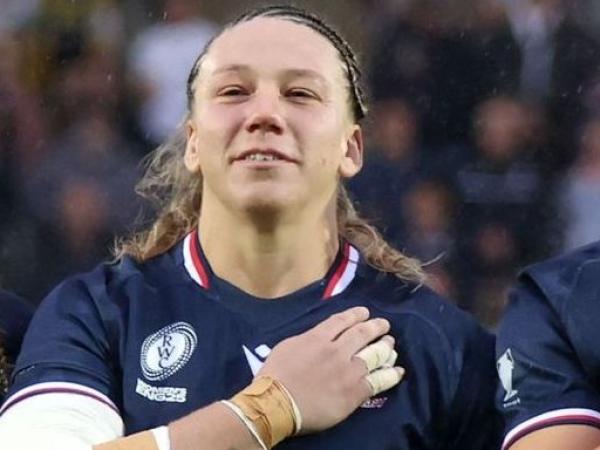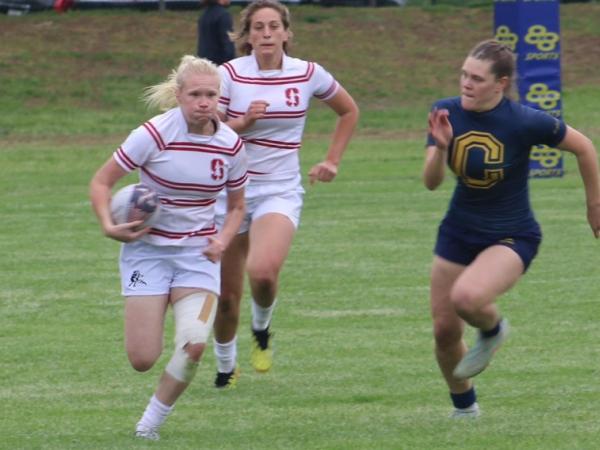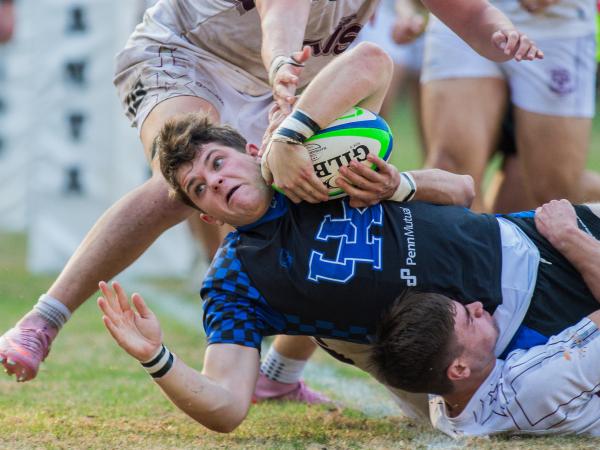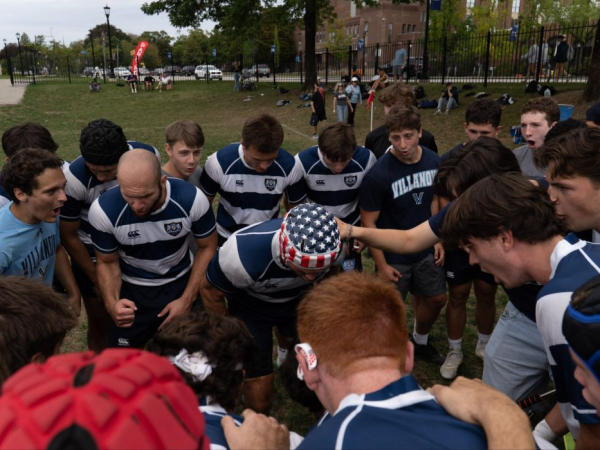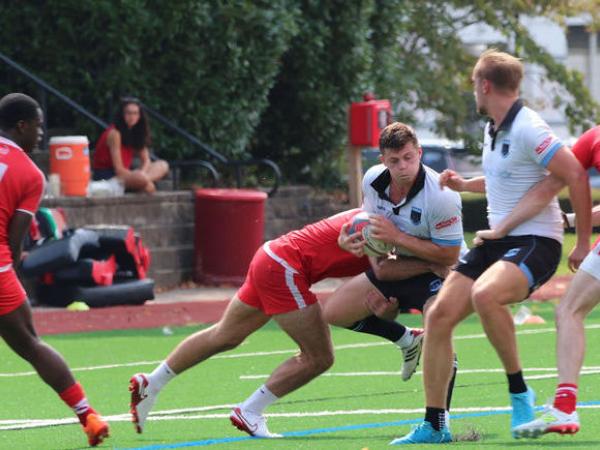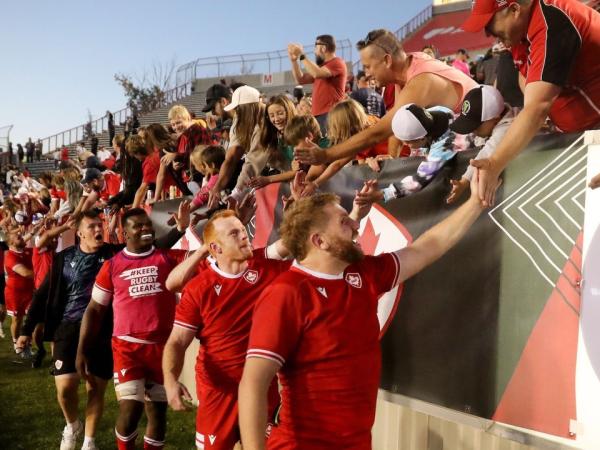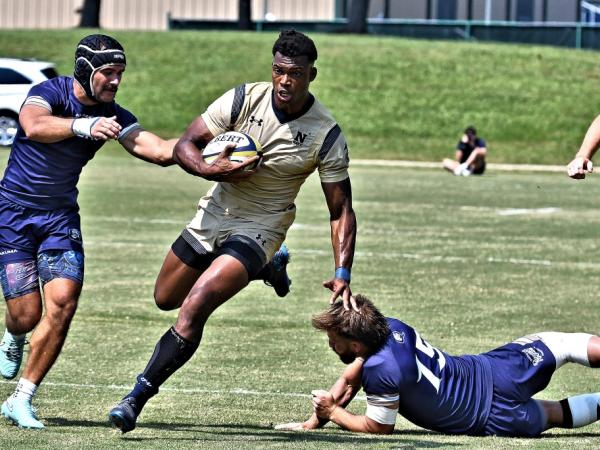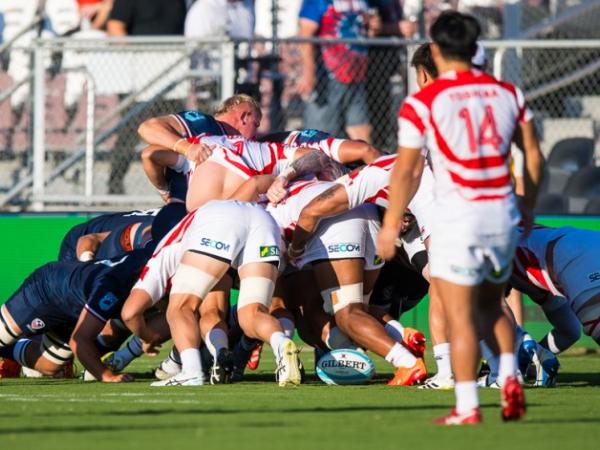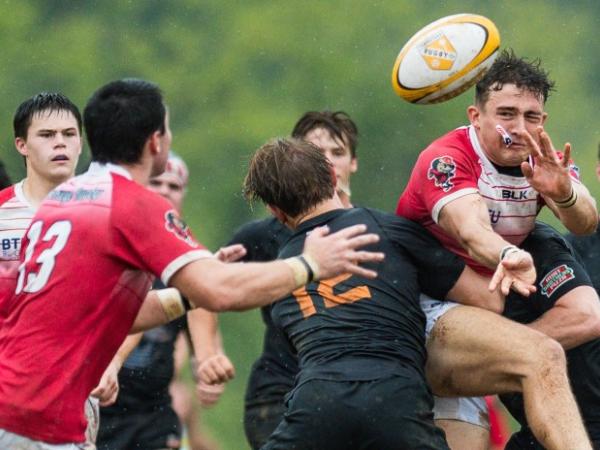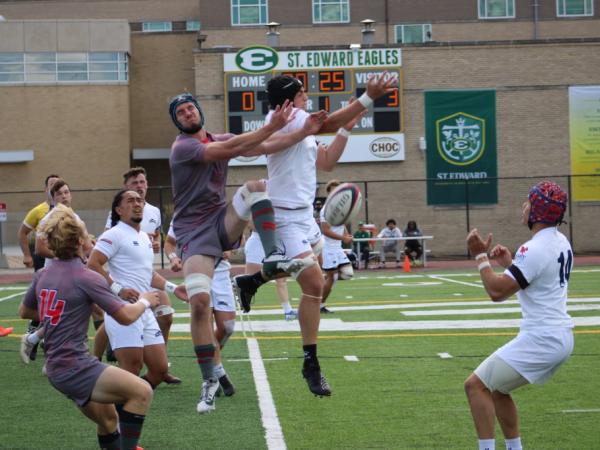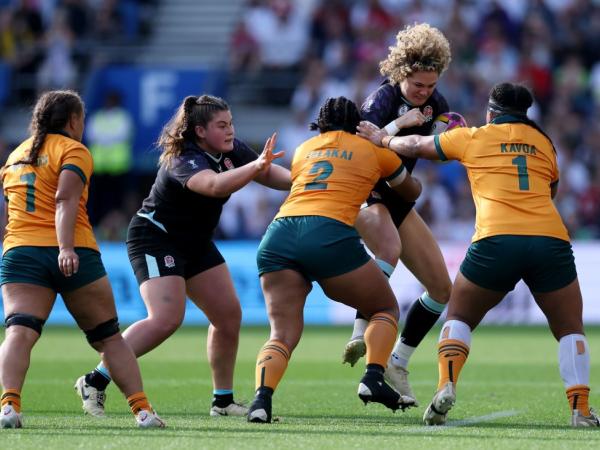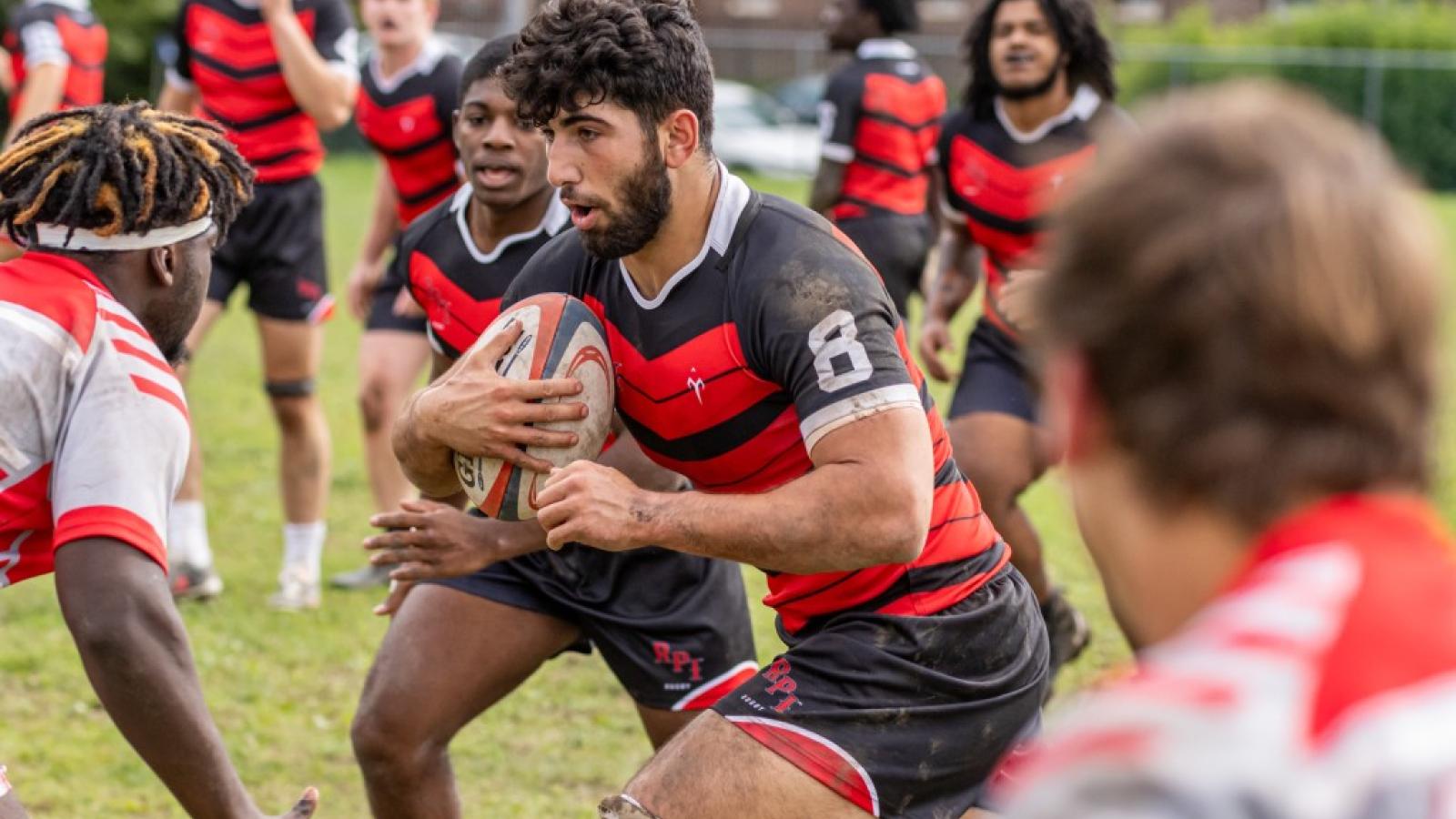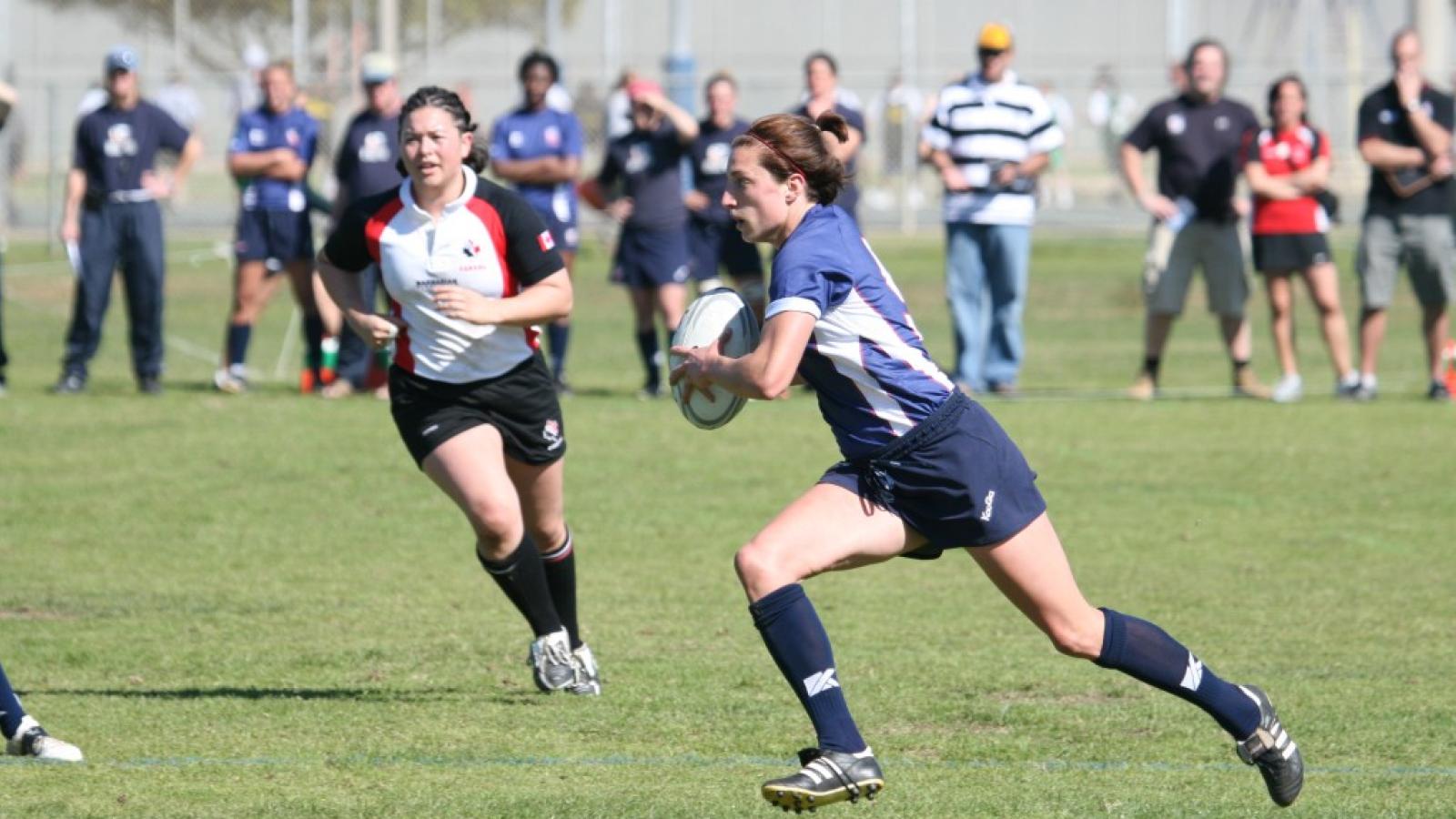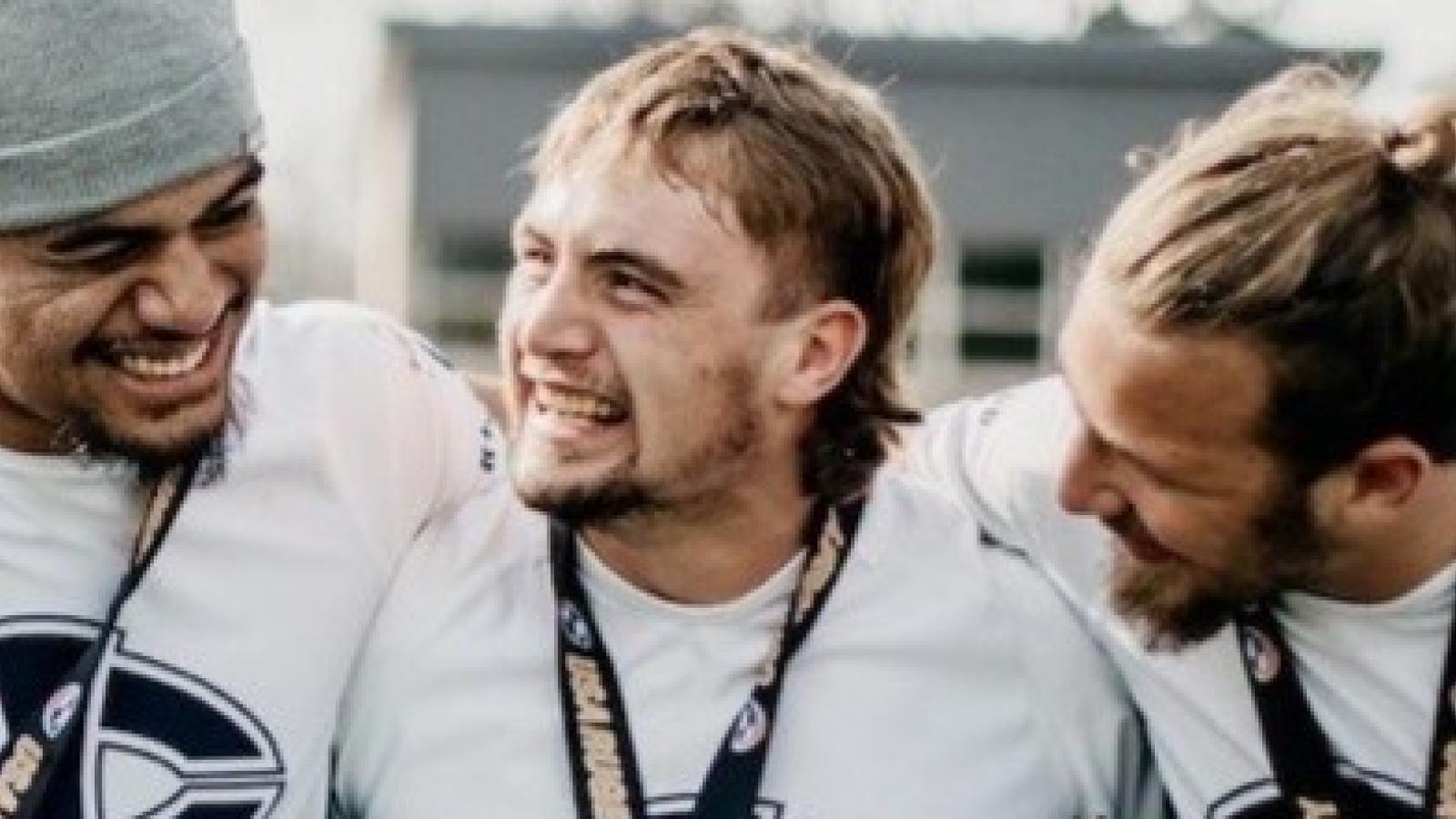How Youth & HS rugby will operate under USA Rugby’s new structure will be decided in the coming week.
In a process that has undergone a huge shakeup in the last seven days due to a shift in focus on how the Youth & HS reorganization will happen, new Terms of Reference have been submitted for comment and, soon, a vote.
State Governing Bodies (what were called State Rugby Organizations) have received copies of the Terms of Reference (TORs). Those TORs outline how boardmembers of the new USA Youth & HS Council will be voted in, and, and how that Council will interact with USA Rugby’s new board.
This is a shift from how the process had been progressing up until last Wednesday. The plan had been to use American Youth Rugby, an existing 501c3, as the basic organization that would provide the framework for new bylaws.
But last week’s call, which included USA Rugby boardmember Paul Santinelli and USA Rugby CEO Ross Young, both surprise participants, changed almost everything.
This week’s call, without any surprise guests, outlined the plan. The TORs come first. The membership looks at the TORs and comments. There is precious little time to comment (through end-of-business on Friday, May 29) and those working on the TORs (Matt Downes a lawyer connected with Rugby Maryland, David Poole from SoCal Youth Rugby, and Ed Matteo from Rugby Connecticut) want the comments to be about the voting process.
SGBs will be put together in regions. Each SGB can put forward a candidate for the Youth & HS Council Board. The region votes for its candidate, and those members sit on the Council Board.
Then that Council Board will get to work on hashing out the bylaws, voting on the Youth & HS representative to USA Rugby’s Board, and working out the relationship with USA Rugby.
After comments, there may be some changes to the TORs, and then SGBs can vote on the TORs and start to place people on the council over the next few days (USA Rugny's Johnathan Atkeison has a timeline that has Council members in place by May 31).
Then SGBs will start working on populating the Board and putting people on the Audit & Risk Committee (a key committee).
Here are some of the takeaways we’ve received from the latest call, and where we are now:
1. Matteo said that the formation of a 501c3 is still on the table, and in fact is the goal, but the TORs and the new Board had to be finalized first.
2. Matteo also said that USA Rugby and US Youth & HS (or whatever it is officially called) will be two separate entities, and that if they can’t work together, the Youth & HS group could walk away.
3. Matteo also said that states not happy with this plan could also walk away. This was taken by at least one person on the call as a “take it or leave it” ultimatum, but could also be interpreted as a confirmation that youth and high school rugby can operate independently.
4. There appears to be a large voting bloc of states that support the new approach.
5. There also appears to be a small group of SGBs that are angry at how everything went down over the past week, and feel that this plan will, to quote one source, “sell Youth & High School’s soul back to USA Rugby and the people who screwed everything up in the first place.”
6. It appears that if the same-old, same-old are to be turfed out, it will be up to the SGB membership to push for that change.
7. it remains unclear how much power USA Rugby will have over this group. Will USA Rugby be able to dictate terms on dues (the new USA Rugby bylaws allow for dues increases, but by a supermajority of 75% of the Board)? If a group is unhappy with USA Rugby’s actions, can they just up stakes and leave?
8. A letter from Rugby Texas Co Chair Maggie Rouse typifies the communication sent to the membership. In it, Rouse addresses the fact that this is all happening very quickly.
“…The move to a new structure across USAR is being driven by two main forces, the bankruptcy procedures and time. The former being governed by legislation and will move forward as and when particular hurdles are overcome, the latter by the need to prepare for the expiration of existing USAR contracts and their replacement. To make these work across the whole organization, certain structures and documents need to be in place. You may have already read about the Council structure of which YHS is one pillar, but from a document perspective there are three key items: By Laws, Community Agreement, and Terms of Reference. Each will require approval from the State Governing Bodies (SGB’s) - what used to be known as the SRO’s and GU’s.
"As a member-driven SGB structure, it is the membership that takes these decisions. This is typically done at the Annual General Meeting (AGM), but the timing is such, and the fluidity, that this will not be possible. The RTB is asking for dispensation to represent the membership as is being required to keep the reorganization project moving forward. We recognize this is not part of our normal operating arrangement, and do not seek this permission lightly. We would work within boundaries to safeguard the interests of all, but ultimately the membership will vote on the final proposals and will have the ability to accept or reject the offer made to the SGB’s. This permission is simply to enable us to continue to be part of the process and contribute to its success.”
9. Had the change in approach happened three or four weeks ago, rather than a week ago, there’d be less rushing.
10. There remains concern that there won't be an independent Youth & HS organization, and that they won't have independent and self-determining bylaws, and there seems to be a concern at every step about who makes these pretty momentous decisions.
A Goff Rugby Report Editor's Note: In the old way of running the USA Rugby Board, back before 2006, the membership voted on those running for Board positions. The voter turnout was horrible. Despite a printed ballot being inserted in Rugby Magazine and mailed out to every member, less than 20%, and often less than 10%, of the membership ever voted.
This was why the same old faces showed up on the board every year. This new plan also depends on voting, and this is where members have to have their voices heard. If they are asked to vote, they should learn about the issues or candidates, and vote. If you don’t want the same people running things who crashed the last bus, then you have to do something about it.






